Wen-Shuai Hu
Adaptive Cross-Attention-Driven Spatial-Spectral Graph Convolutional Network for Hyperspectral Image Classification
Apr 12, 2022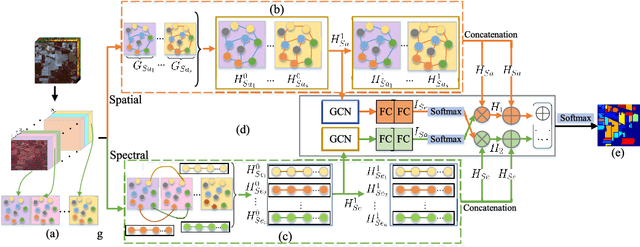
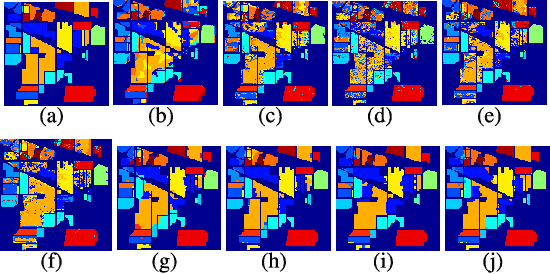
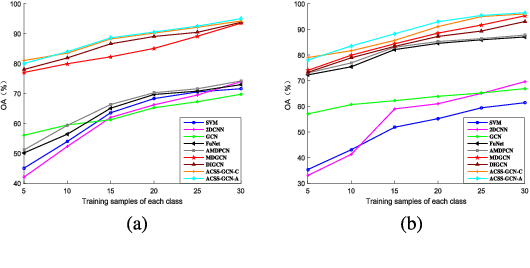
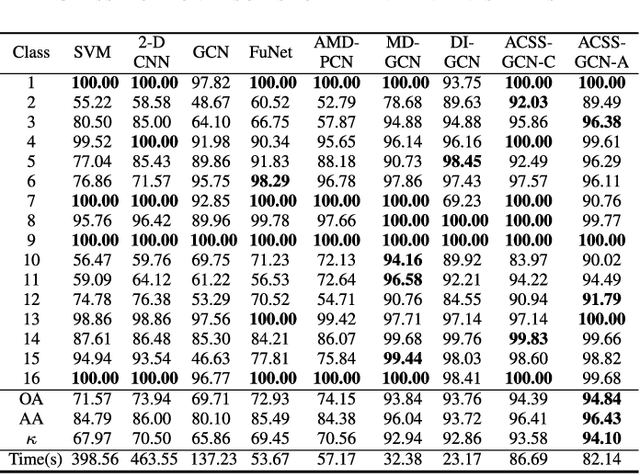
Abstract:Recently, graph convolutional networks (GCNs) have been developed to explore spatial relationship between pixels, achieving better classification performance of hyperspectral images (HSIs). However, these methods fail to sufficiently leverage the relationship between spectral bands in HSI data. As such, we propose an adaptive cross-attention-driven spatial-spectral graph convolutional network (ACSS-GCN), which is composed of a spatial GCN (Sa-GCN) subnetwork, a spectral GCN (Se-GCN) subnetwork, and a graph cross-attention fusion module (GCAFM). Specifically, Sa-GCN and Se-GCN are proposed to extract the spatial and spectral features by modeling correlations between spatial pixels and between spectral bands, respectively. Then, by integrating attention mechanism into information aggregation of graph, the GCAFM, including three parts, i.e., spatial graph attention block, spectral graph attention block, and fusion block, is designed to fuse the spatial and spectral features and suppress noise interference in Sa-GCN and Se-GCN. Moreover, the idea of the adaptive graph is introduced to explore an optimal graph through back propagation during the training process. Experiments on two HSI data sets show that the proposed method achieves better performance than other classification methods.
A3CLNN: Spatial, Spectral and Multiscale Attention ConvLSTM Neural Network for Multisource Remote Sensing Data Classification
Apr 09, 2022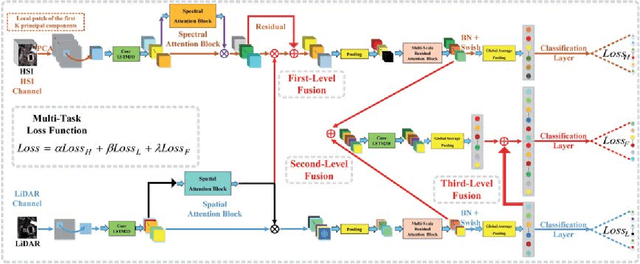
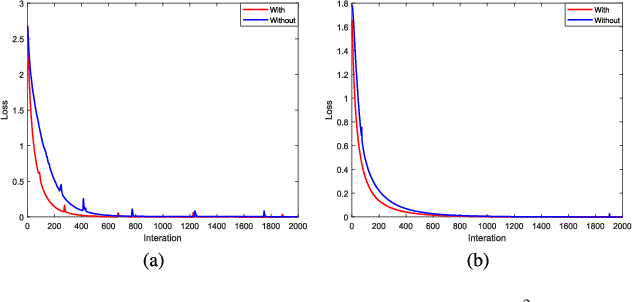

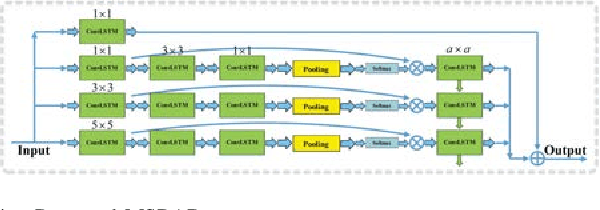
Abstract:The problem of effectively exploiting the information multiple data sources has become a relevant but challenging research topic in remote sensing. In this paper, we propose a new approach to exploit the complementarity of two data sources: hyperspectral images (HSIs) and light detection and ranging (LiDAR) data. Specifically, we develop a new dual-channel spatial, spectral and multiscale attention convolutional long short-term memory neural network (called dual-channel A3CLNN) for feature extraction and classification of multisource remote sensing data. Spatial, spectral and multiscale attention mechanisms are first designed for HSI and LiDAR data in order to learn spectral- and spatial-enhanced feature representations, and to represent multiscale information for different classes. In the designed fusion network, a novel composite attention learning mechanism (combined with a three-level fusion strategy) is used to fully integrate the features in these two data sources. Finally, inspired by the idea of transfer learning, a novel stepwise training strategy is designed to yield a final classification result. Our experimental results, conducted on several multisource remote sensing data sets, demonstrate that the newly proposed dual-channel A3CLNN exhibits better feature representation ability (leading to more competitive classification performance) than other state-of-the-art methods.
* 16 pages, 10 figures
Feature Extraction and Classification Based on Spatial-Spectral ConvLSTM Neural Network for Hyperspectral Images
May 09, 2019
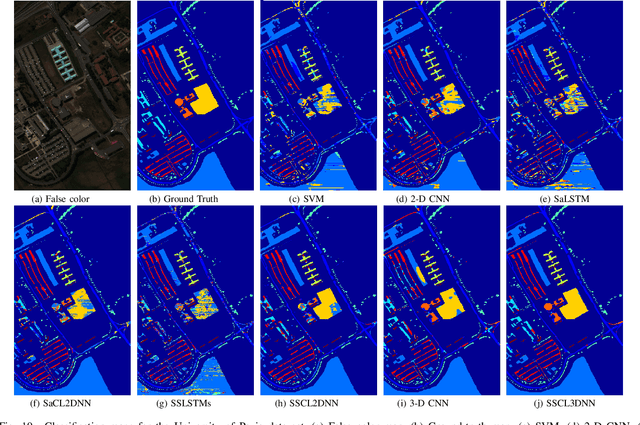
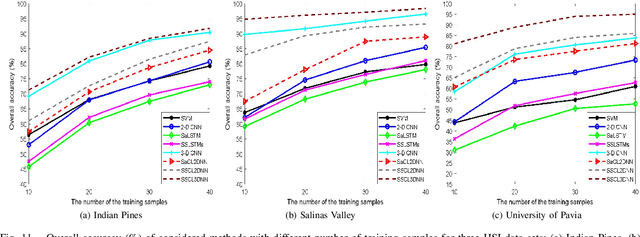
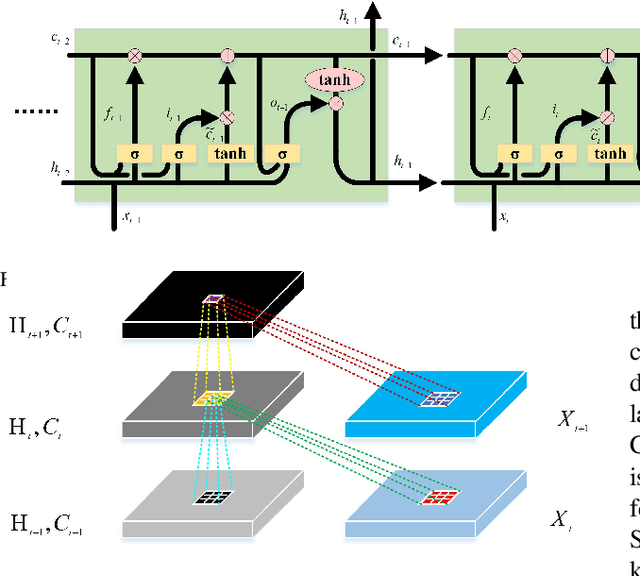
Abstract:In recent years, deep learning has presented a great advance in hyperspectral image (HSI) classification. Particularly, Long Short-Term Memory (LSTM), as a special deep learning structure, has shown great ability in modeling long-term dependencies in the time dimension of video or the spectral dimension of HSIs. However, the loss of spatial information makes it quite difficult to obtain the better performance. In order to address this problem, two novel deep models are proposed to extract more discriminative spatial-spectral features by exploiting the Convolutional LSTM (ConvLSTM) for the first time. By taking the data patch in a local sliding window as the input of each memory cell band by band, the 2-D extended architecture of LSTM is considered for building the spatial-spectral ConvLSTM 2-D Neural Network (SSCL2DNN) to model long-range dependencies in the spectral domain. To take advantage of spatial and spectral information more effectively for extracting a more discriminative spatial-spectral feature representation, the spatial-spectral ConvLSTM 3-D Neural Network (SSCL3DNN) is further proposed by extending LSTM to 3-D version. The experiments, conducted on three commonly used HSI data sets, demonstrate that the proposed deep models have certain competitive advantages and can provide better classification performance than other state-of-the-art approaches.
 Add to Chrome
Add to Chrome Add to Firefox
Add to Firefox Add to Edge
Add to Edge